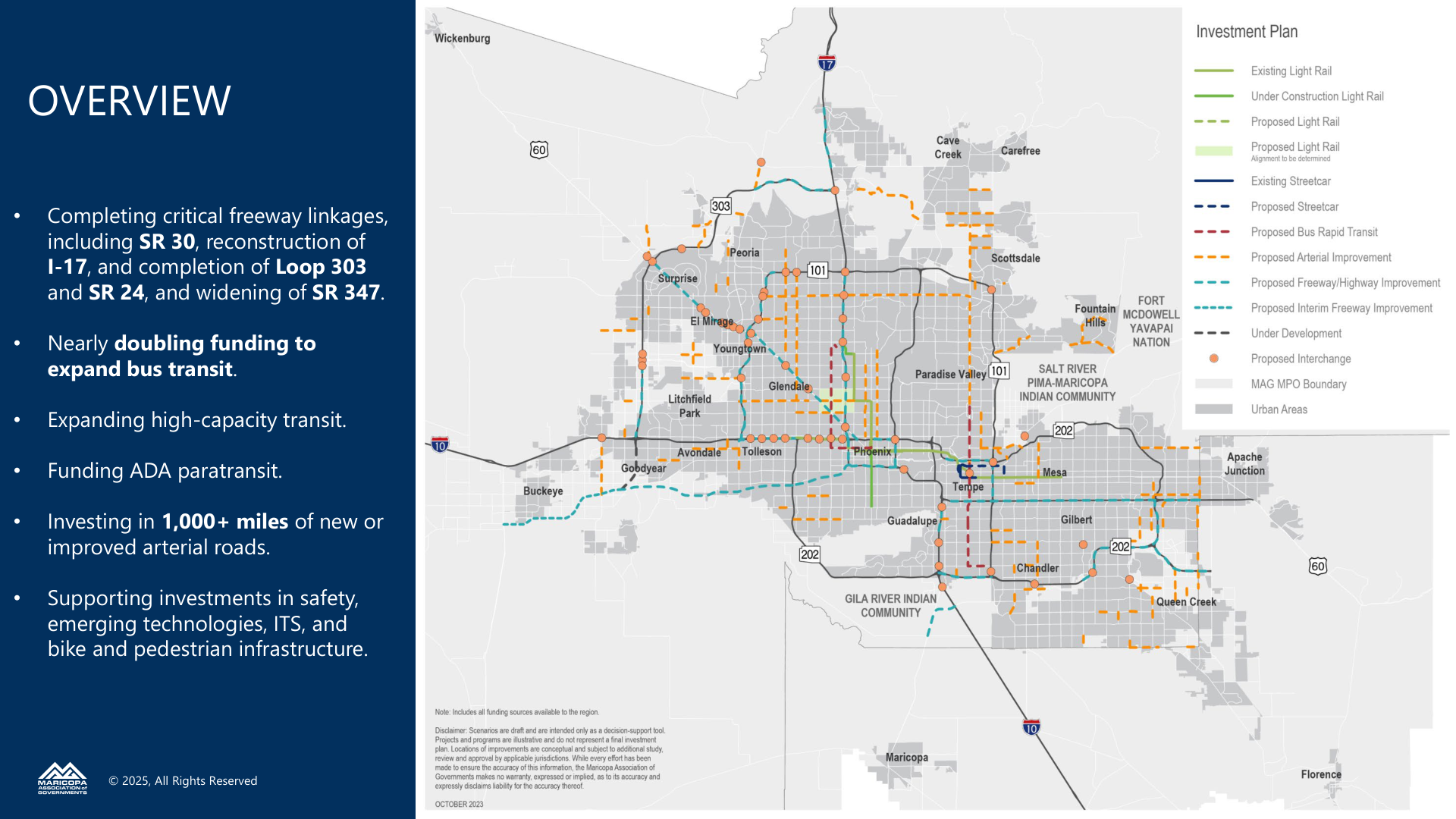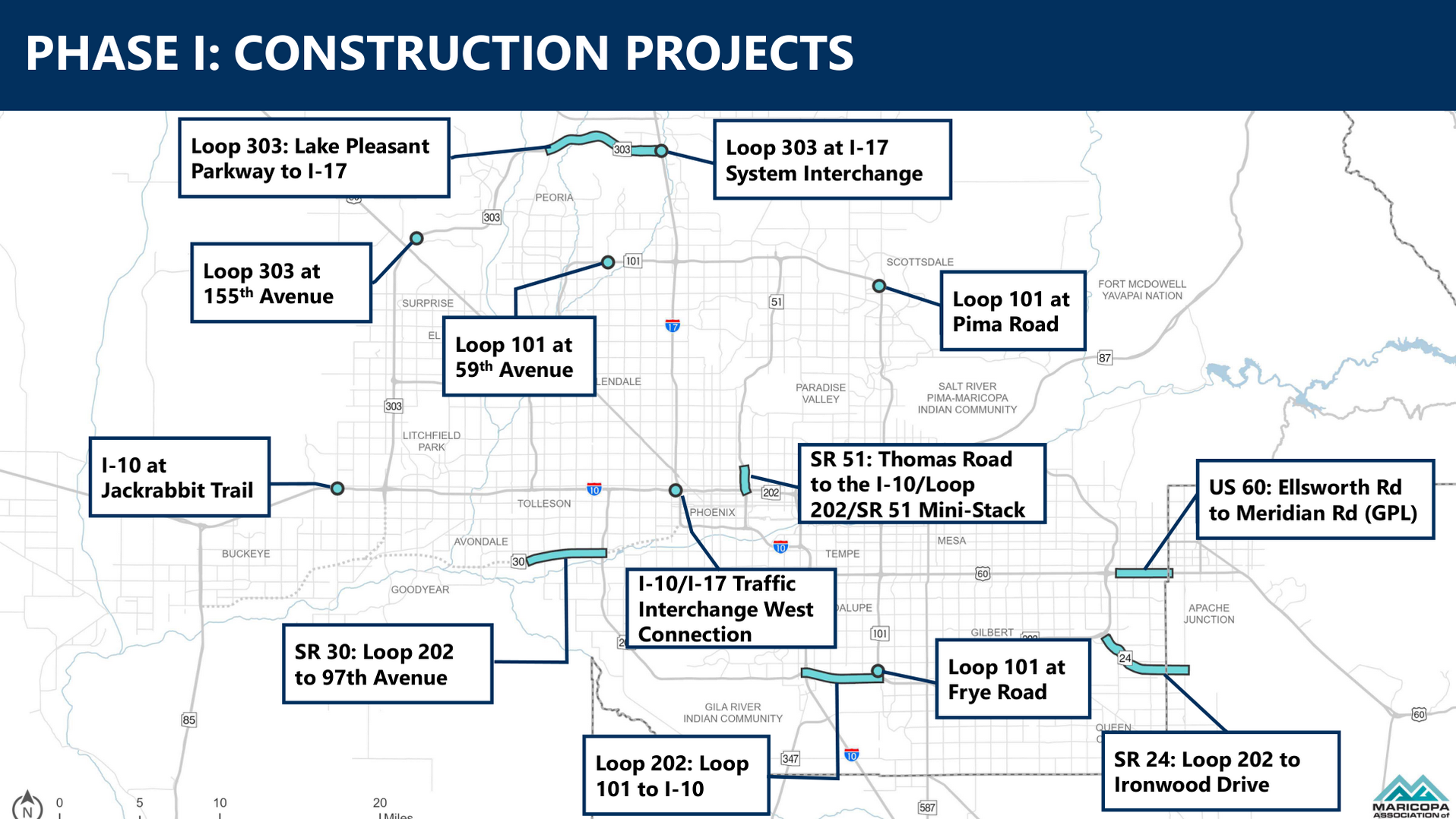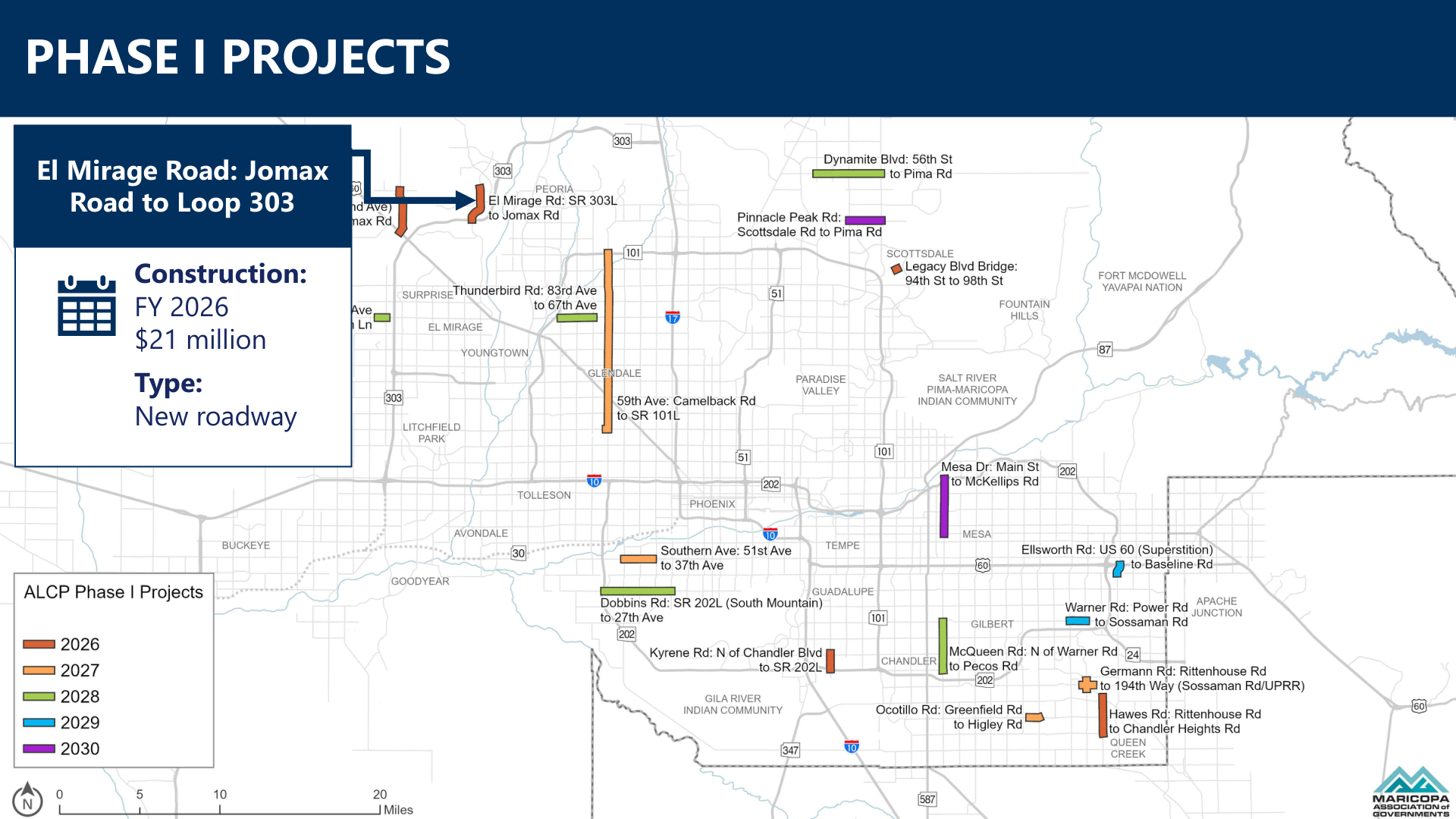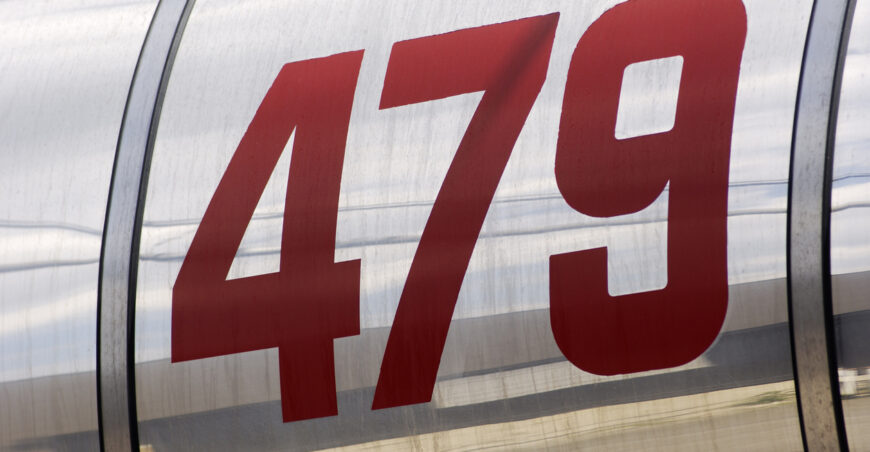At the November 2025 CCIM Breakfast, the Maricopa Association of Governments (MAG) unveiled a forward-looking plan that will shape the Valley’s transportation network for the next two decades. Proposition 479, approved by voters in 2024, extends the county’s half-cent transportation sales tax through 2045, generating $28.2 billion for roads, freeways, and transit projects. For real estate investors and developers, this represents not just infrastructure, it’s the foundation for the next phase of growth across the Phoenix metropolitan area.
MAG’s Role in Regional Planning
MAG serves as the regional planning agency for Maricopa County and parts of Pinal County. Its mission is to coordinate transportation, housing, air quality, and economic planning across municipalities. MAG’s long-term approach has made Phoenix one of the most connected and efficiently growing metro areas in the U.S., ensuring regional mobility keeps pace with rapid population growth.
Proposition 479: Predictable Funding for 20 Years
Proposition 479 provides a sustainable, debt-free funding model that eliminates reliance on bond financing. Over the next 20 years, MAG will allocate funds as follows: $14.9 billion from the sales tax, $2 billion from ADOT’s Highway User Revenue Fund, and the remainder from federal programs and MAG formula funds. This approach provides predictability, allowing MAG to sequence projects efficiently – an advantage for developers evaluating long-term site access and value growth.
Economic Impact: Growth and Connectivity
Transportation investment is one of the strongest predictors of commercial real estate value. MAG’s prior efforts under Propositions 300 and 400 transformed the region’s accessibility and created competitive advantages in travel reliability and congestion mitigation. Phoenix now ranks among the least congested major metros in the U.S., giving businesses and tenants a measurable productivity edge.

Travel Time Index and Congestion Comparison
Key Freeway Corridors Driving Development
Phase I of Proposition 479 focuses on critical freeway connections shaping regional development. The SR-24 extension will unlock East Mesa and Queen Creek’s expansion potential. The SR-30 freeway will connect Loop 303 to I-17, catalyzing growth in the Southwest Valley. The I-10/Jackrabbit Trail interchange will alleviate freight bottlenecks, and the Loop 303/I-17 system interchange will strengthen the TSMC industrial corridor. Each of these projects directly influences commercial site values and tenant absorption in adjacent areas.

Freeway Phase I Project Map
Arterial Improvements: Enhancing Accessibility
Beyond freeways, Proposition 479 funds over 1,000 miles of new or improved arterial lanes, including major corridors like Camelback Road, Thomas Road, Dynamite Boulevard, and El Mirage Road. These improvements provide critical last-mile access for medical office, retail, and industrial developments. Arterials often deliver faster economic benefits than freeways—improving circulation, visibility, and site viability for infill projects.

Regional Arterial Network
Managing Rising Construction Costs
One of MAG’s biggest challenges is managing cost escalation. Construction costs have increased 60%–135% since 2020. Loop 303 widening jumped from $17.9 million to $35.8 million, and SR-24 construction soared from $66.5 million to $156.7 million. Developers should anticipate rising construction contingencies and timeline adjustments when planning near these corridors.

Loop 303 and SR-24 Cost Escalation Analysis
Population Growth vs. Funding Constraints
While Arizona’s population has grown more than 45% since 2000, gas-tax revenues, MAG’s traditional source of transportation funding, have remained flat due to inflation and electric vehicle adoption. Proposition 479 addresses this gap through sales-tax extensions and federal partnerships, but continued population growth will require innovative funding mechanisms.

Population Growth vs. HURF Collections
Investor and Developer Insights
For commercial real estate investors, Proposition 479 signals long-term confidence in infrastructure delivery. Predictable funding means reduced entitlement risk and better forecasting of access improvements. Growth corridors like SR-24, SR-30, and Loop 303 zones will see increasing land values and absorption velocity as projects advance. For developers targeting medical office, retail, and industrial us
At the November 2025 CCIM Breakfast, the Maricopa Association of Governments (MAG) unveiled a forward-looking plan that will shape the Valley’s transportation network for the next two decades. Proposition 479, approved by voters in 2024, extends the county’s half-cent transportation sales tax through 2045, generating $28.2 billion for roads, freeways, and transit projects. For real estate investors and developers, this represents not just infrastructure, it’s the foundation for the next phase of growth across the Phoenix metropolitan area.
The Bottom Line
Proposition 479 isn’t just a transportation initiative – it’s a growth strategy for Greater Phoenix. The Maricopa Association of Governments’ disciplined funding and implementation framework ensures that infrastructure keeps pace with economic expansion. For investors and developers looking to align with these future corridors, the ICRE Investment Team specializes in identifying strategic opportunities positioned for appreciation. Infrastructure investment today is tomorrow’s valuation driver.
For more information or to explore development opportunities along Arizona’s next-generation mobility corridors, contact the ICRE Investment Team.
















